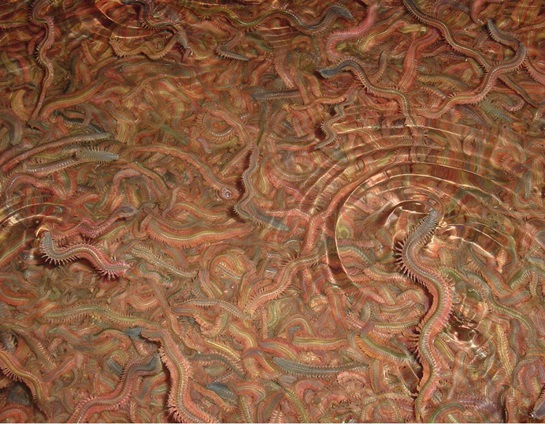Nereis virens
Our SPF Live Polychaetes from TOPSY BAITS & DELTA FARMS of (Nereis virens species) are 100% farmed in a completely bio-secure environment done according to GMP+ and HACCP standards (with certifications). Prior to export, the Polychaetes are tested by various private and government accredited labs validating both the nutrition and bio-security profiles. The nutritional quality is stable throughout the year as worms are fed by special pellets formulated and produced in Europe. Farming Polychaetes in cold waters results in high HUFA levels, 4-5 times more compared to tropical worms. The farming output is more than 300 tons per year, which offers a much more stable supply compared to wild caught, contaminated worms commonly supplied in Asia. Live Polychaetes as a shrimp broodstock feed will increase the nauplii number per female, increase the mating rate, increase the maturation rate, offer better recovery after

